Abstract
Cells of Rhodopseudomonas gelatinosa growing with citrate anaerobically in the light contained citrate lyase only in the acetylated, enzymatically active form of this enzyme. After exhaustion of citrate in the culture medium citrate lyase was deacetylated to yield the inactive sulfhydryl (HS) enzyme. Acetylation of HS-citrate lyase required light, anaerobic conditions and the availability of citrate as substrate. The acetylation reaction already in progress stopped immediately when the culture was placed in the dark. Deacetylation of citrate lyase occurred anaerobically in the light when citrate was exhausted and under aerobic conditions in the presence or absence of citrate. In cells of R. gelatinosa fermenting citrate in the dark neither the acetylating enzyme nor the deacetylating enzyme was active.
Full text
PDF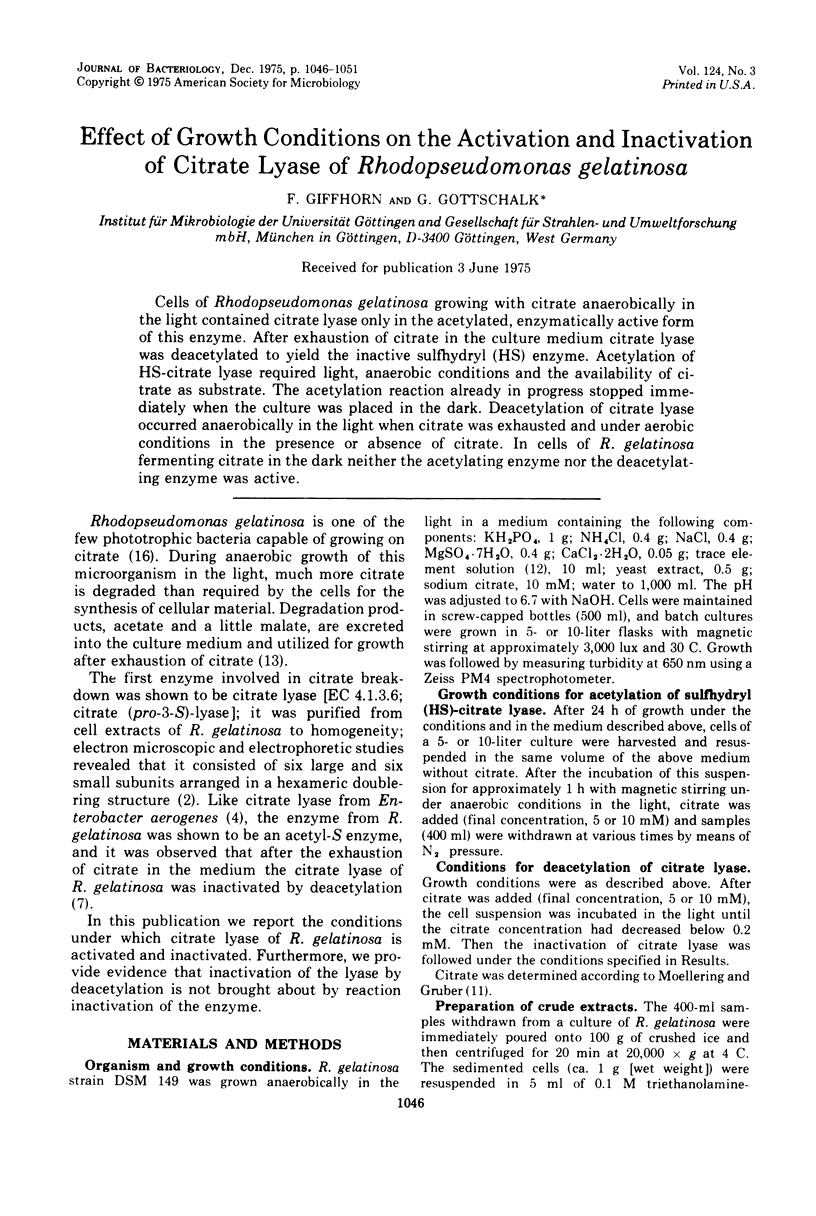
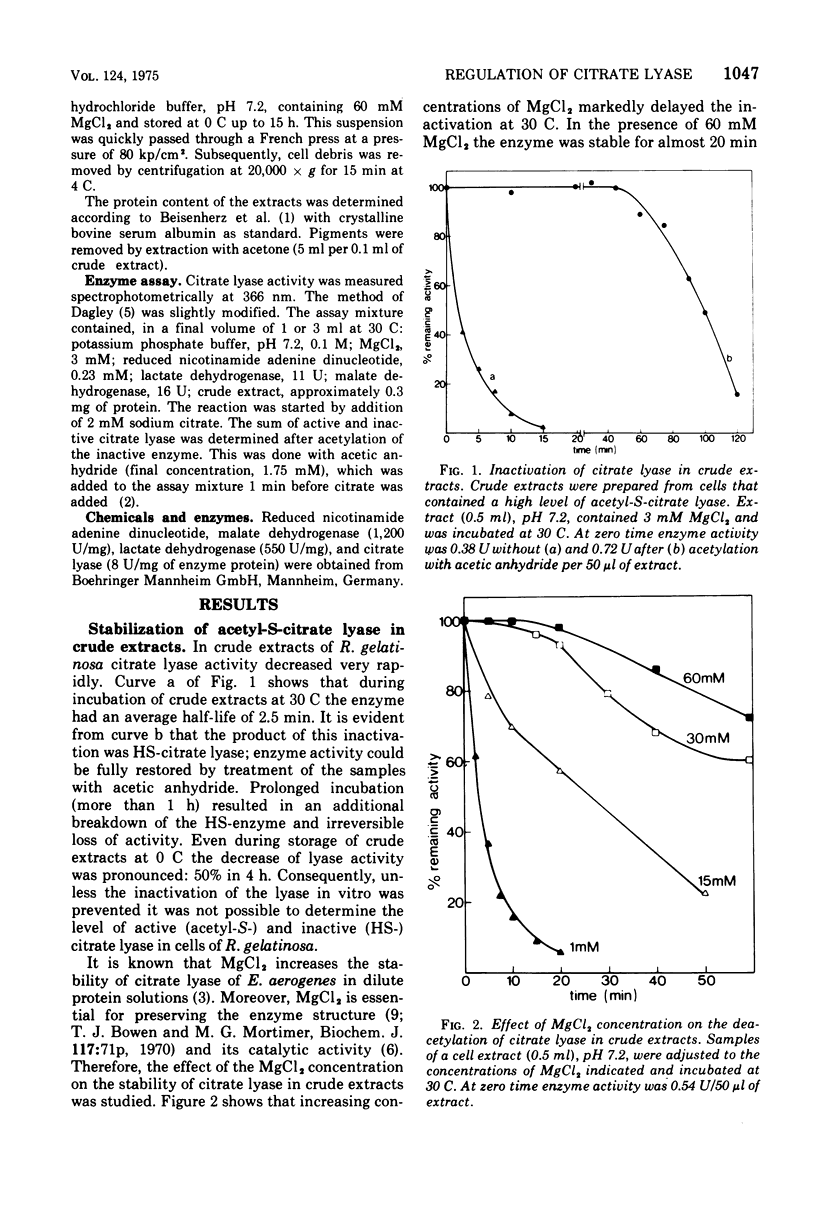
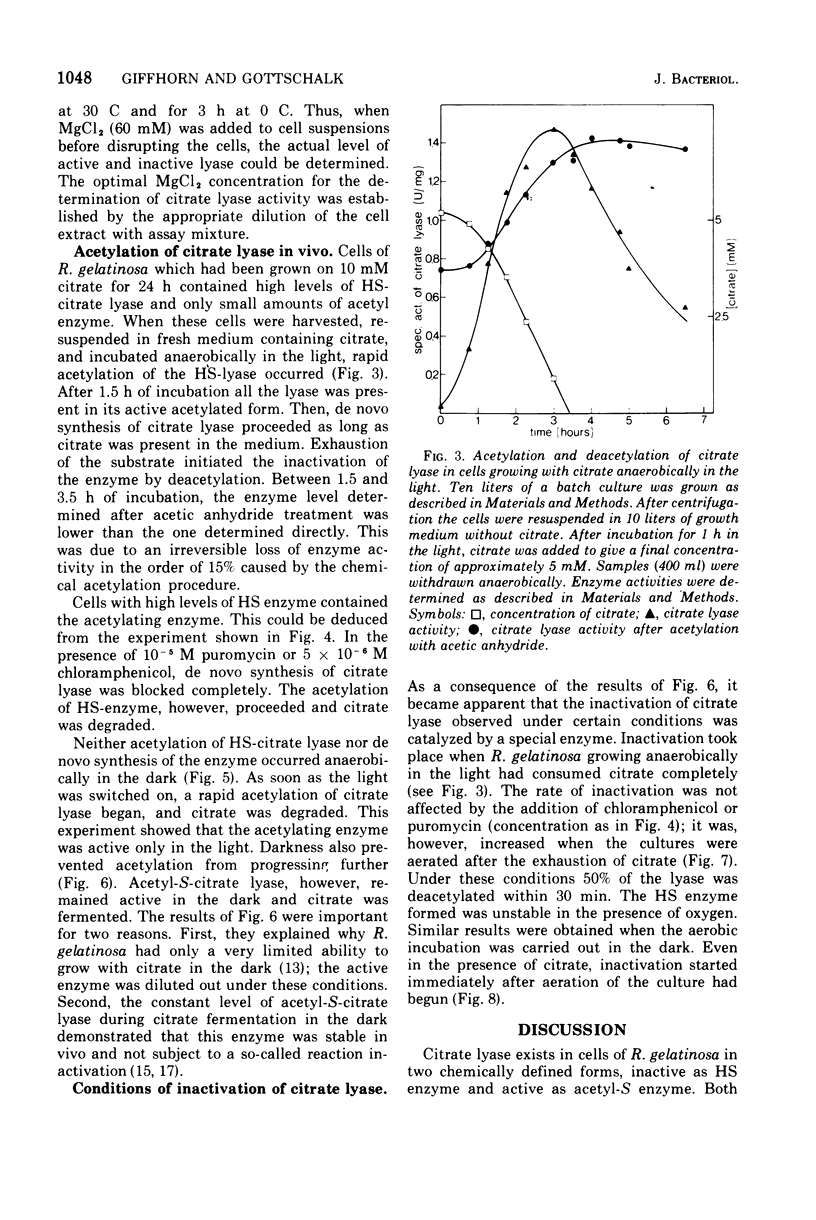
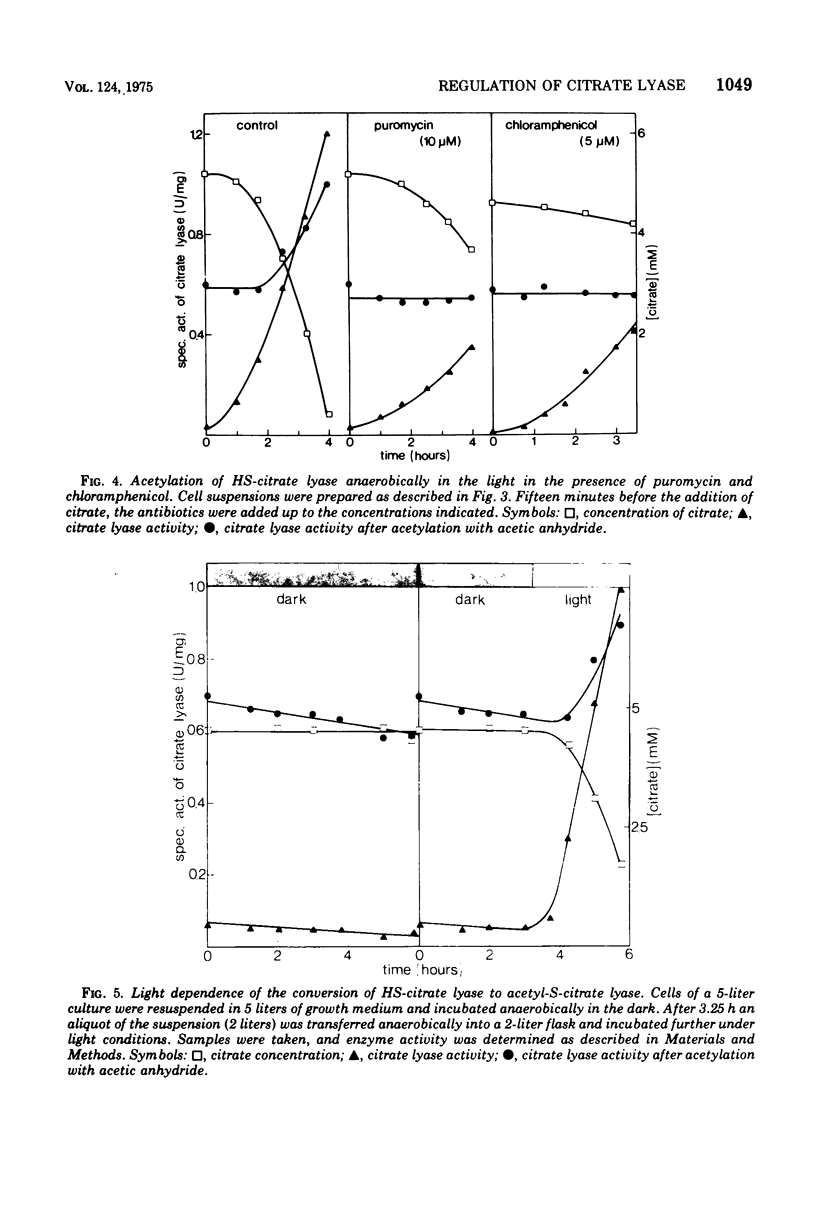
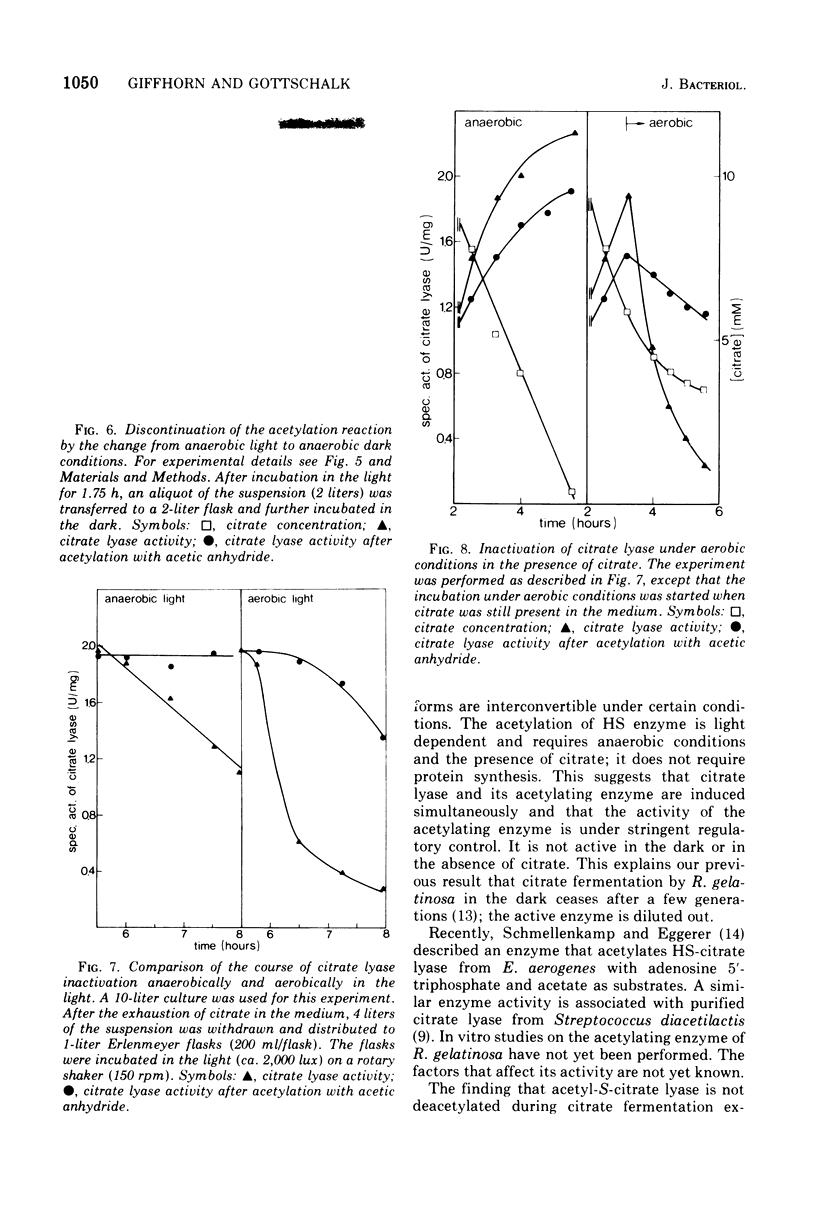
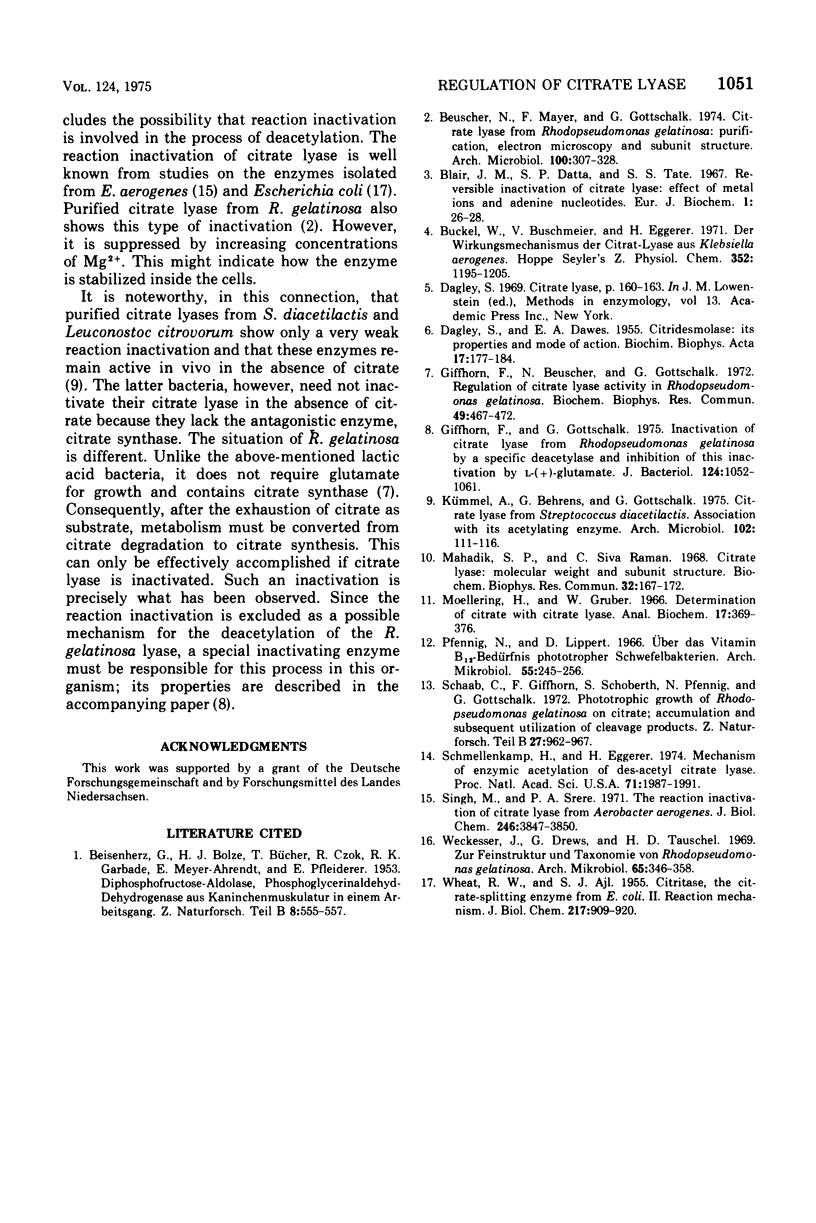
Images in this article
Selected References
These references are in PubMed. This may not be the complete list of references from this article.
- Beuscher N., Mayer F., Gottschalk G. Citrate lyase from Rhodopseudomonas gelatinosa: purification, electron microscopy and subunit structure. Arch Microbiol. 1974;100(4):307–328. doi: 10.1007/BF00446325. [DOI] [PubMed] [Google Scholar]
- Blair J. M., Datta S. P., Tate S. S. Reversible inactivation of citrate lyase: effect of metal ions and adenine nucleotides. Eur J Biochem. 1967 Mar;1(1):26–28. doi: 10.1007/978-3-662-25813-2_5. [DOI] [PubMed] [Google Scholar]
- Buckel W., Buschmeier V., Eggerer H. Der Wirkungsmechanismus der Citrat-Lyase aus Klebsiella aerogenes. Hoppe Seylers Z Physiol Chem. 1971 Sep;352(9):1195–1205. [PubMed] [Google Scholar]
- DAGLEY S., DAWES E. A. Citridesmolase: its properties and mode of action. Biochim Biophys Acta. 1955 Jun;17(2):177–184. doi: 10.1016/0006-3002(55)90348-6. [DOI] [PubMed] [Google Scholar]
- Giffhorn F., Beuscher N., Gottschalk G. Regulation of citrate lyase activity in Rhodopseudomonas gelatinosa. Biochem Biophys Res Commun. 1972 Oct 17;49(2):467–472. doi: 10.1016/0006-291x(72)90434-2. [DOI] [PubMed] [Google Scholar]
- Giffhorn F., Gottschalk G. Inactivation of citrate lyase from Rhodopseudomonas gelatinosa by a specific deacetylase and inhibition of this inactivation by L-(+1-glutamate. J Bacteriol. 1975 Dec;124(3):1052–1061. doi: 10.1128/jb.124.3.1052-1061.1975. [DOI] [PMC free article] [PubMed] [Google Scholar]
- Kümmel A., Behrens G., Gottschalk G. Citrate lyase from Streptococcus diacetilactis. Association with its acetylating enzyme. Arch Microbiol. 1975;102(2):111–116. doi: 10.1007/BF00428354. [DOI] [PubMed] [Google Scholar]
- Mahadik S. P., SivaRaman C. Citrate lyase: molecular weight and subunit structure. Biochem Biophys Res Commun. 1968 Jul 26;32(2):167–172. doi: 10.1016/0006-291x(68)90364-1. [DOI] [PubMed] [Google Scholar]
- Moellering H., Gruber W. Determination of citrate with citrate lyase. Anal Biochem. 1966 Dec;17(3):369–376. doi: 10.1016/0003-2697(66)90172-2. [DOI] [PubMed] [Google Scholar]
- Schmellenkamp H., Eggerer H. Mechanism of enzymic acetylation of des-acetyl citrate lyase. Proc Natl Acad Sci U S A. 1974 May;71(5):1987–1991. doi: 10.1073/pnas.71.5.1987. [DOI] [PMC free article] [PubMed] [Google Scholar]
- Singh M., Srere P. A. The reaction inactivation of citrate lyase from Aerobacter aerogenes. J Biol Chem. 1971 Jun 25;246(12):3847–3850. [PubMed] [Google Scholar]
- WHEAT R. W., AJL S. J. Citritase, the citrate-splitting enzyme from Escherichia coli. II. Reaction mechanisms. J Biol Chem. 1955 Dec;217(2):909–920. [PubMed] [Google Scholar]
- Weckesser J., Drews G., Tauschel H. D. Zur Feinstruktur und Taxonomie von Rhodopseudomonas gelatinosa. Arch Mikrobiol. 1969;65(4):346–358. [PubMed] [Google Scholar]




